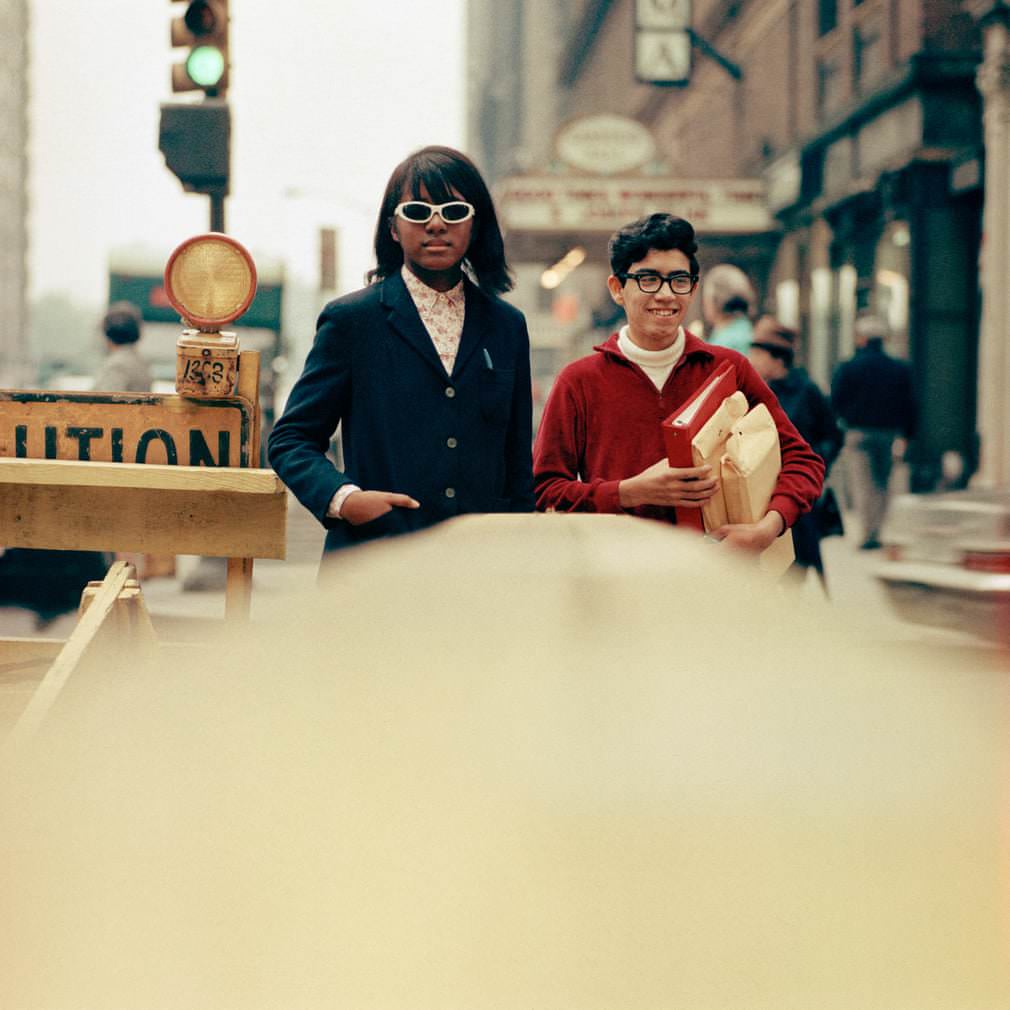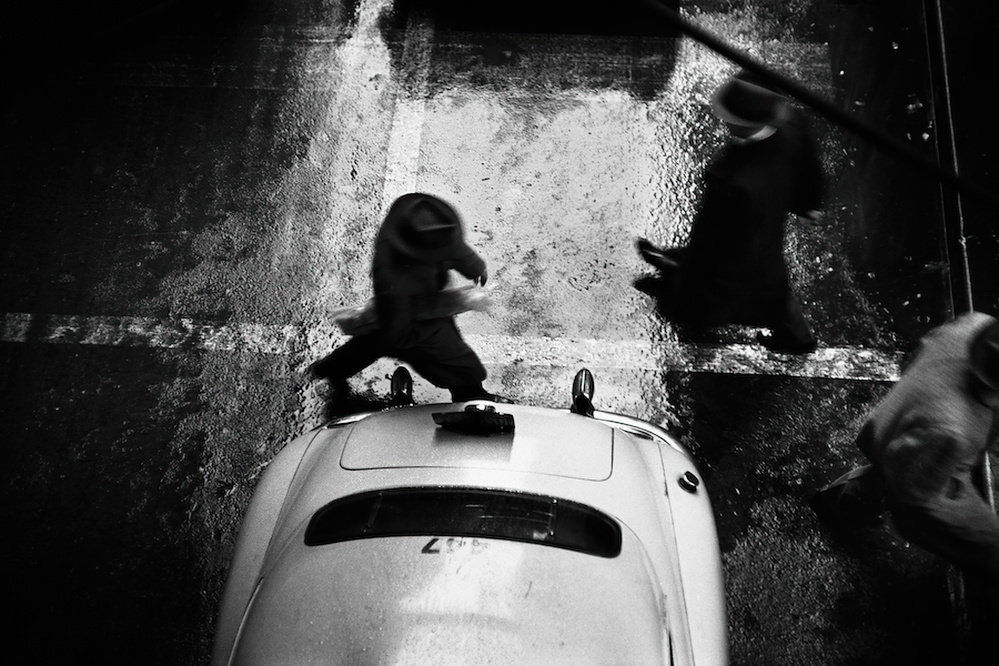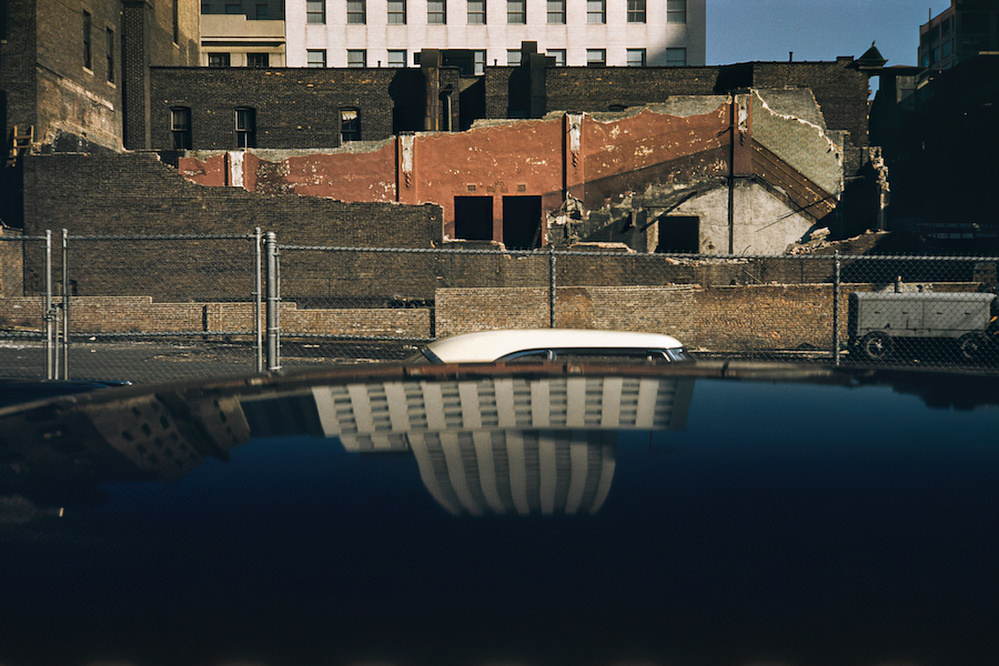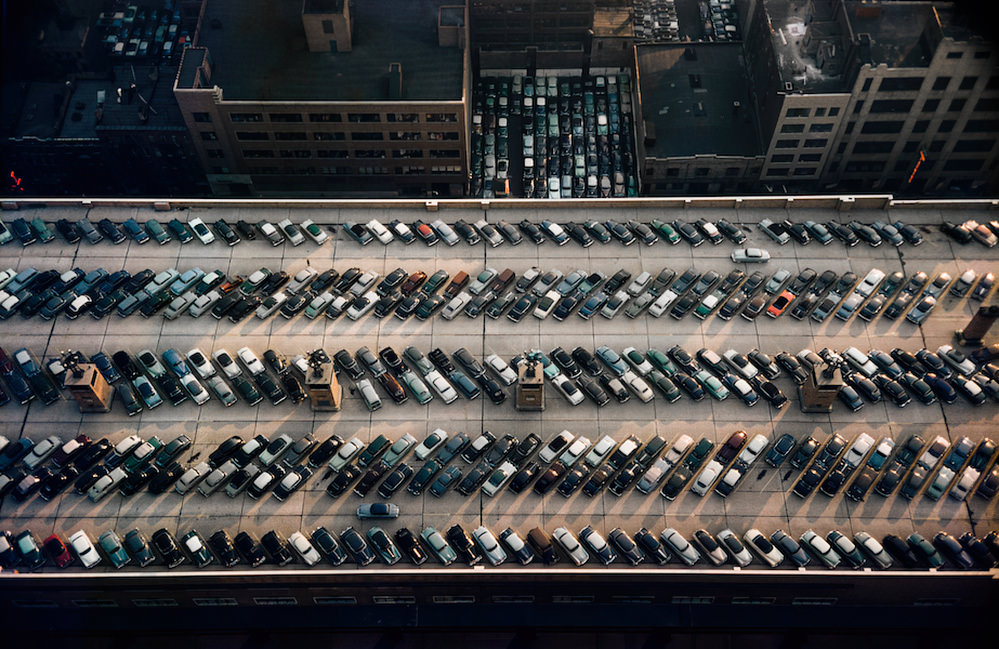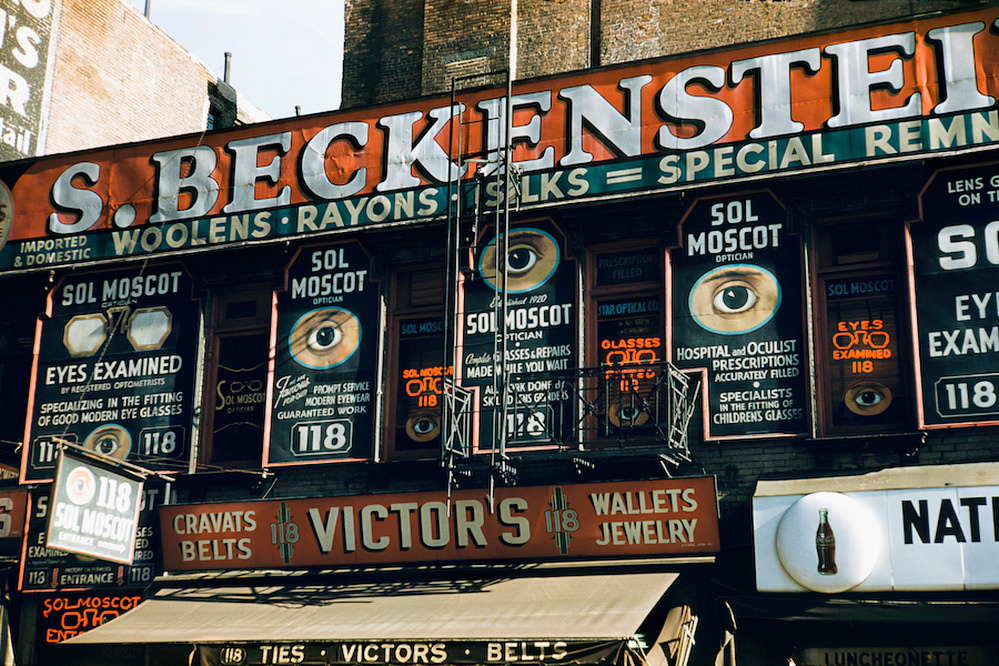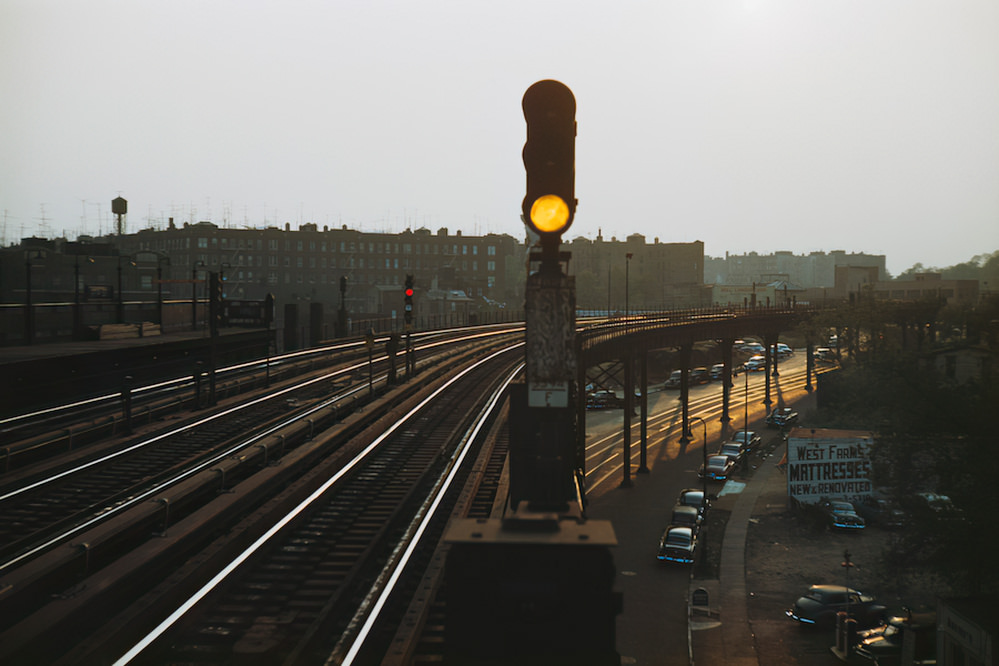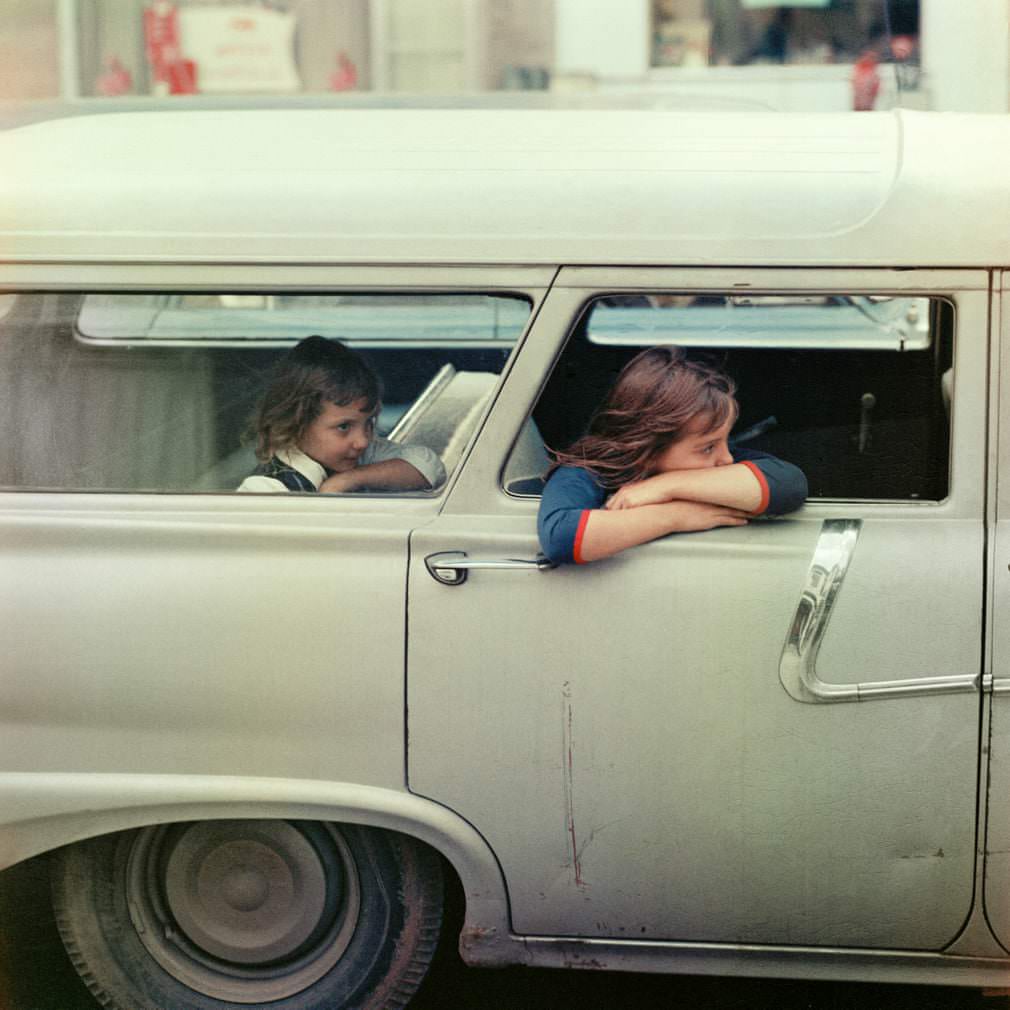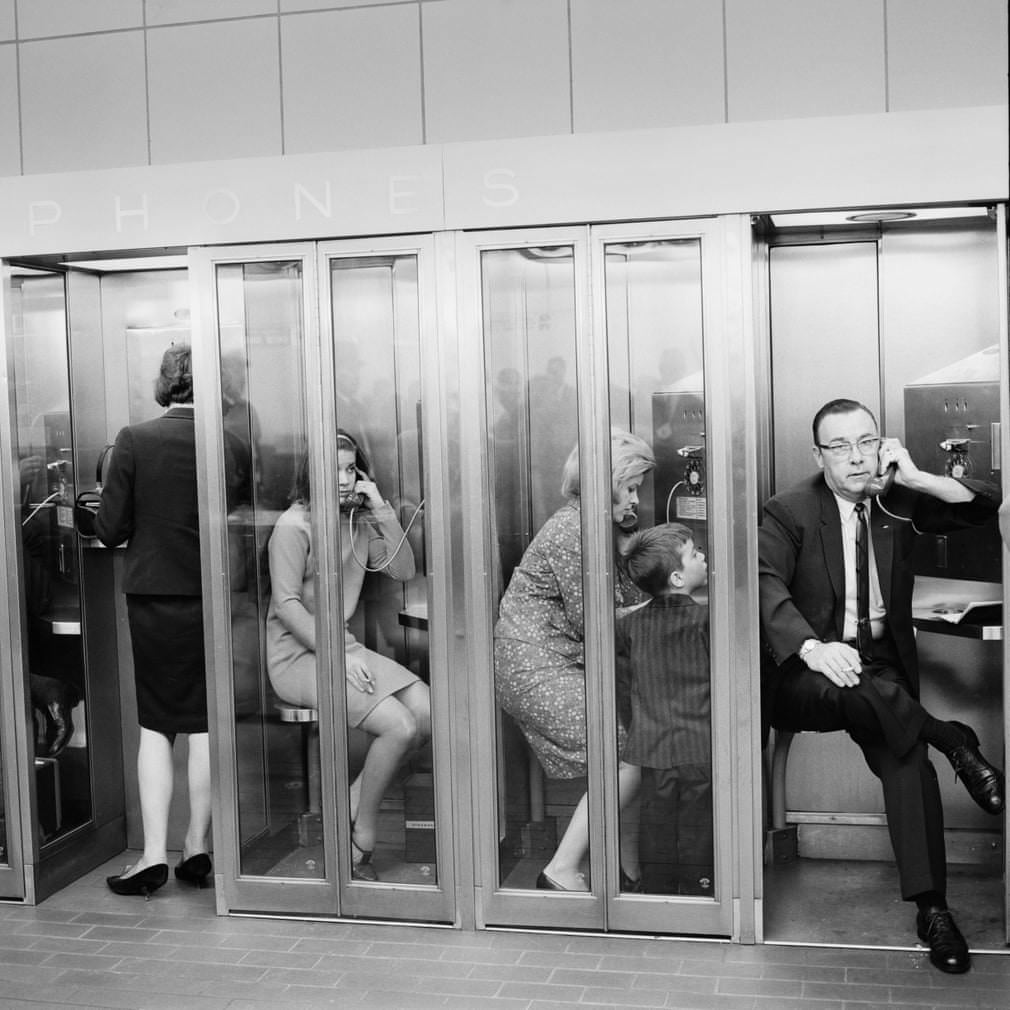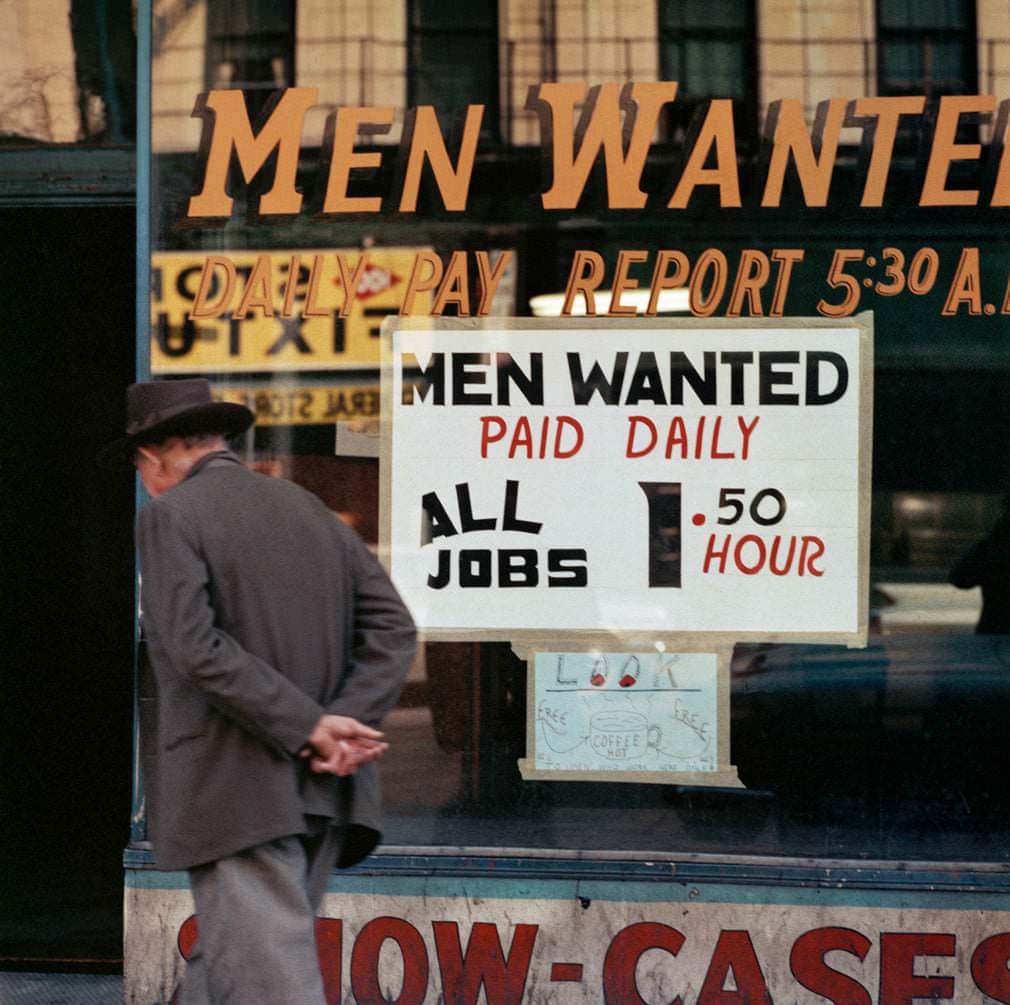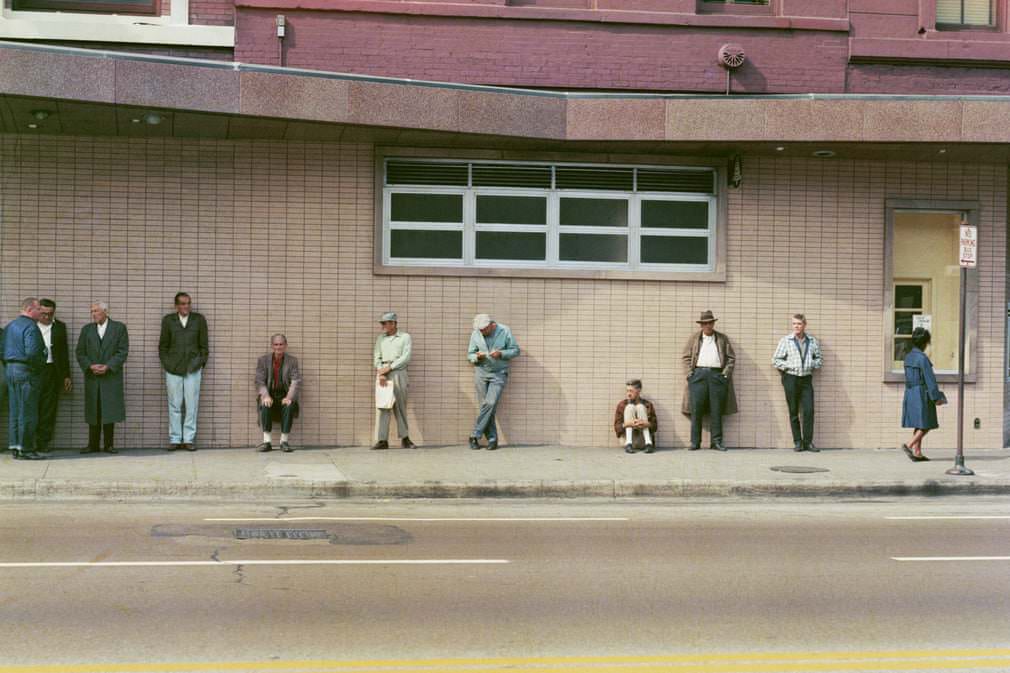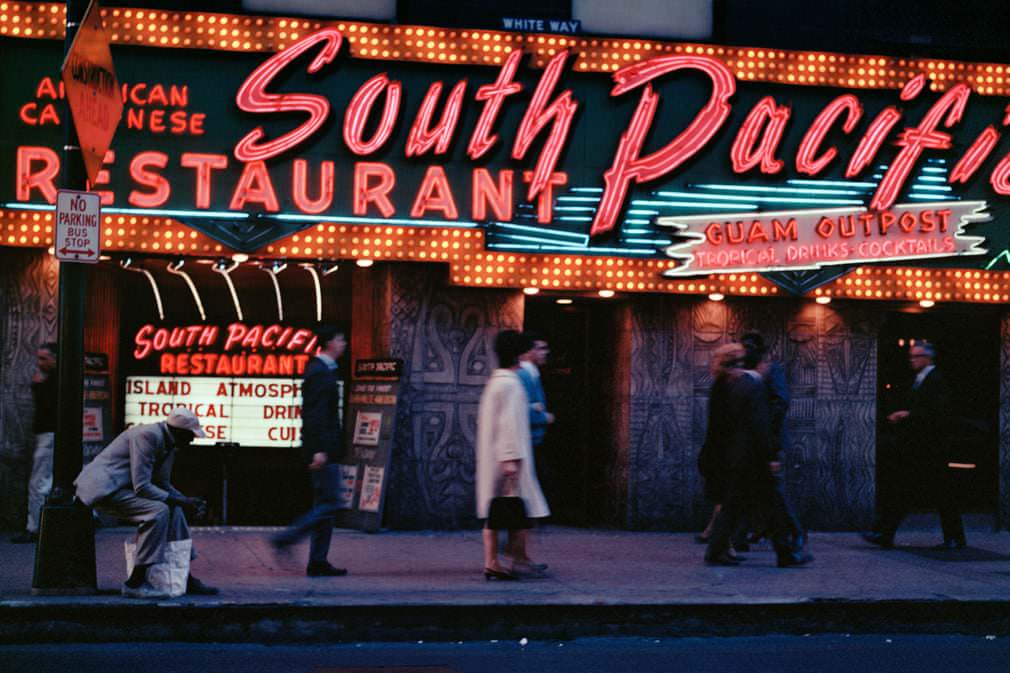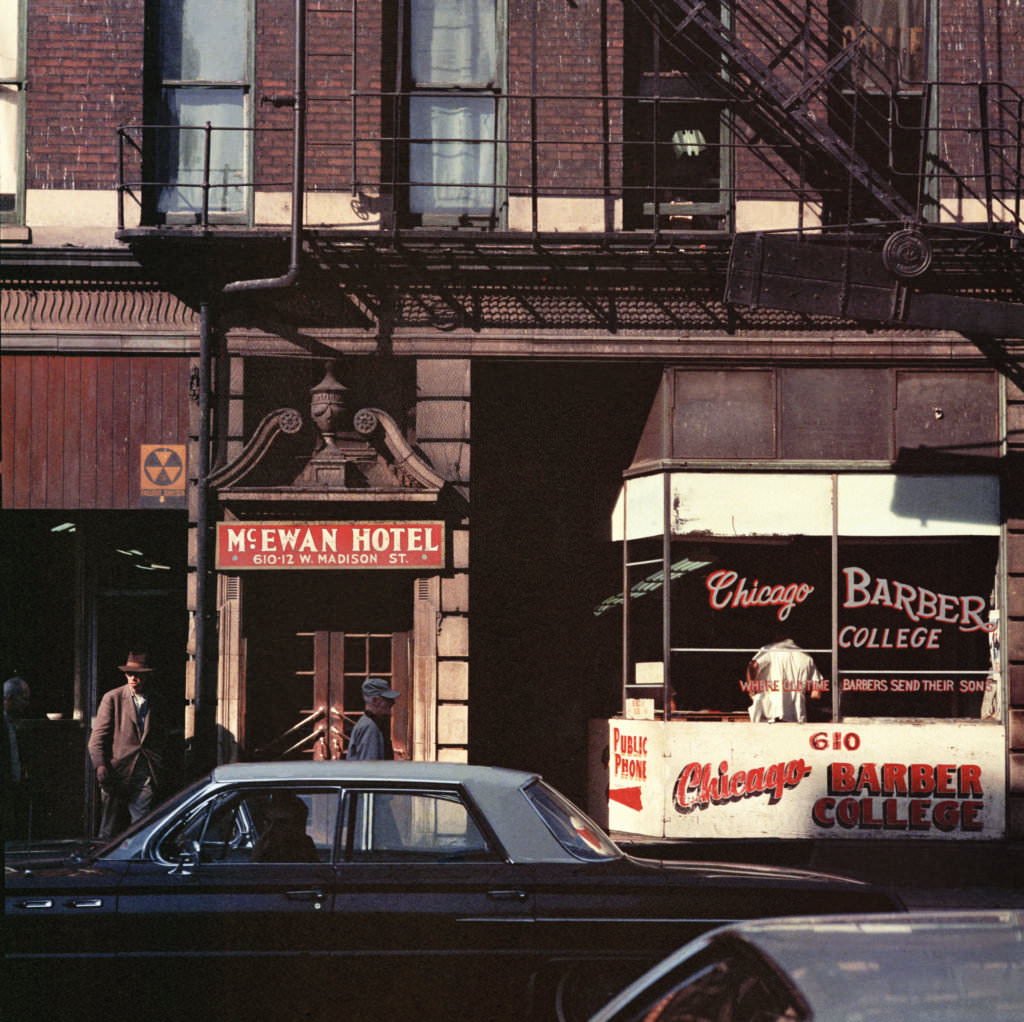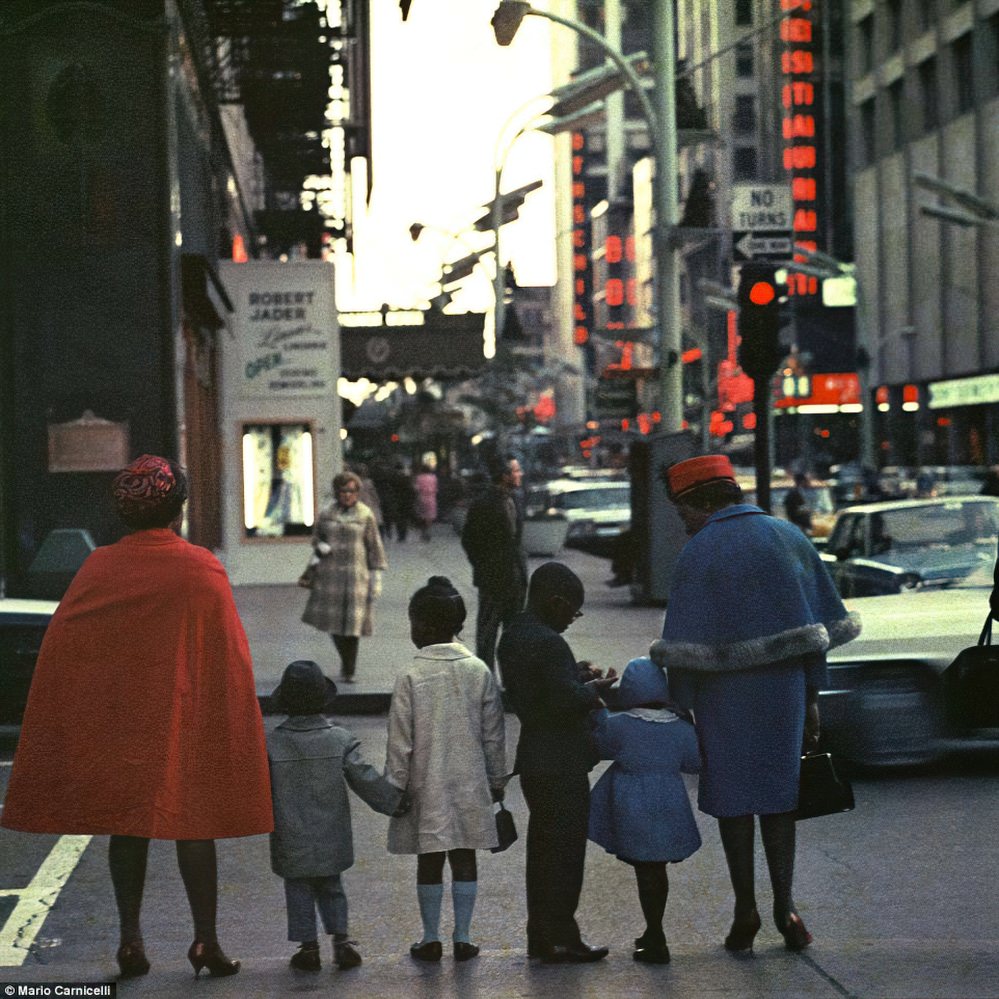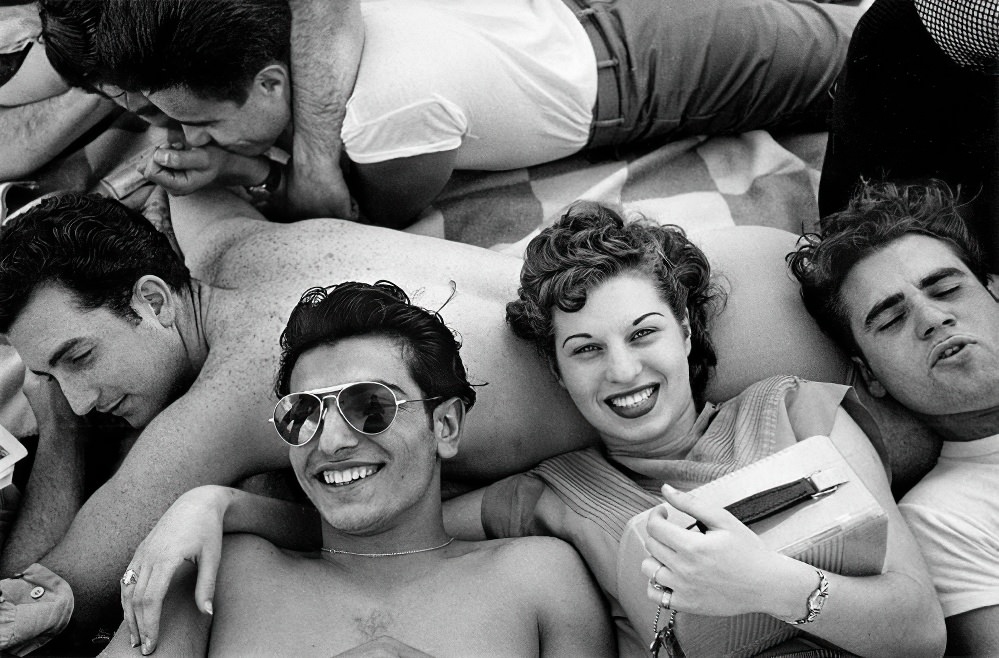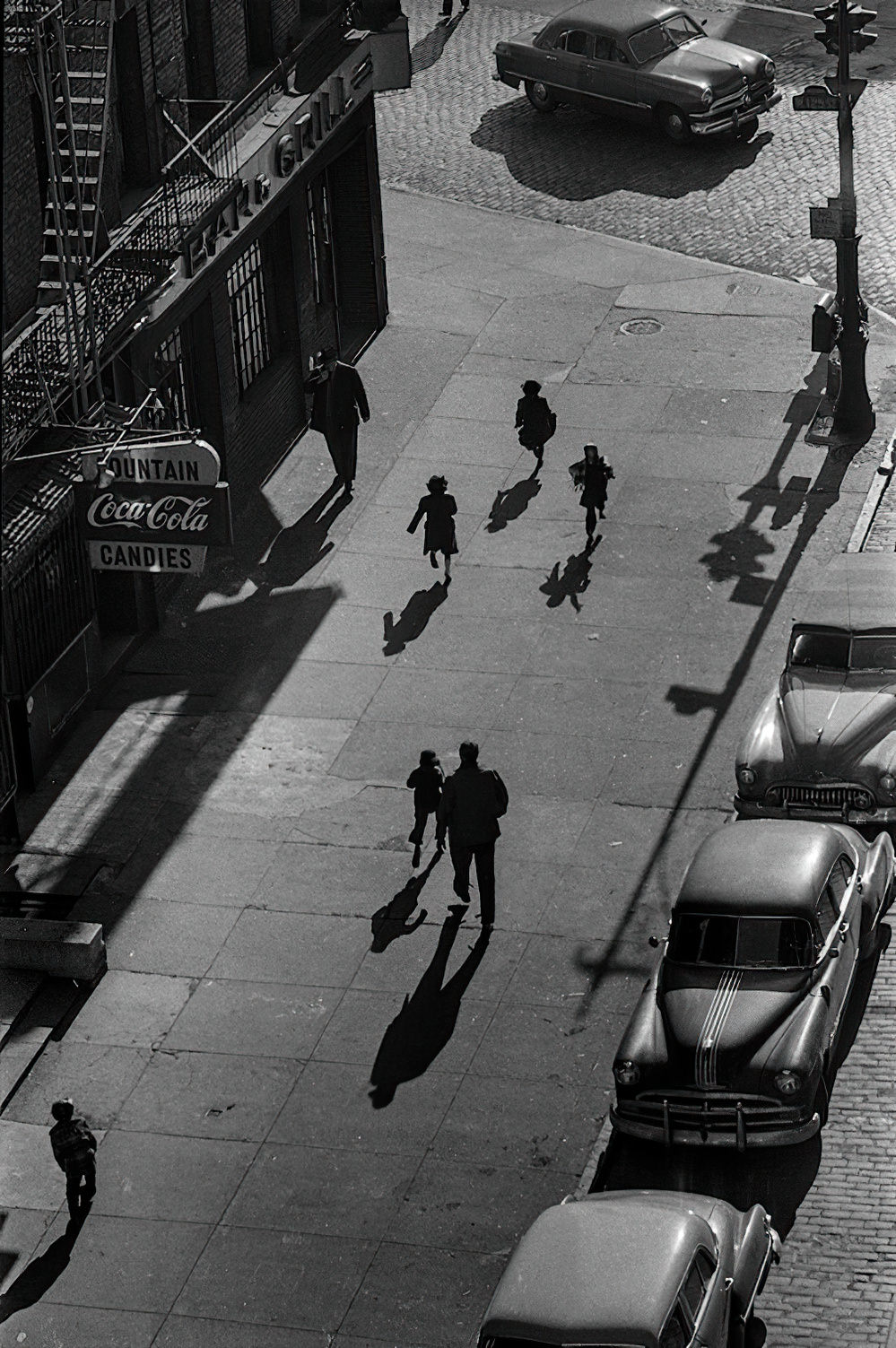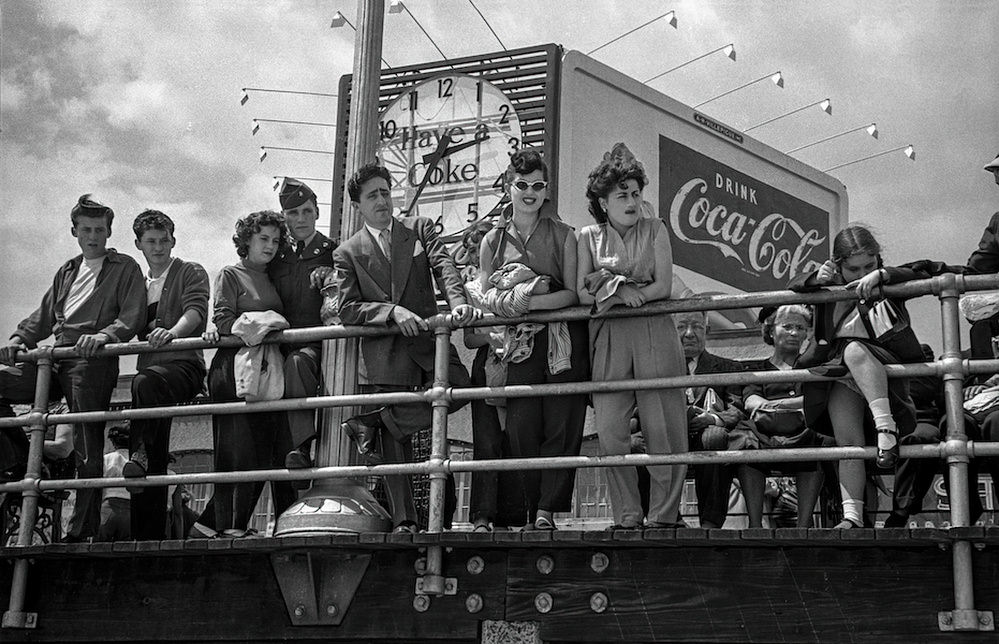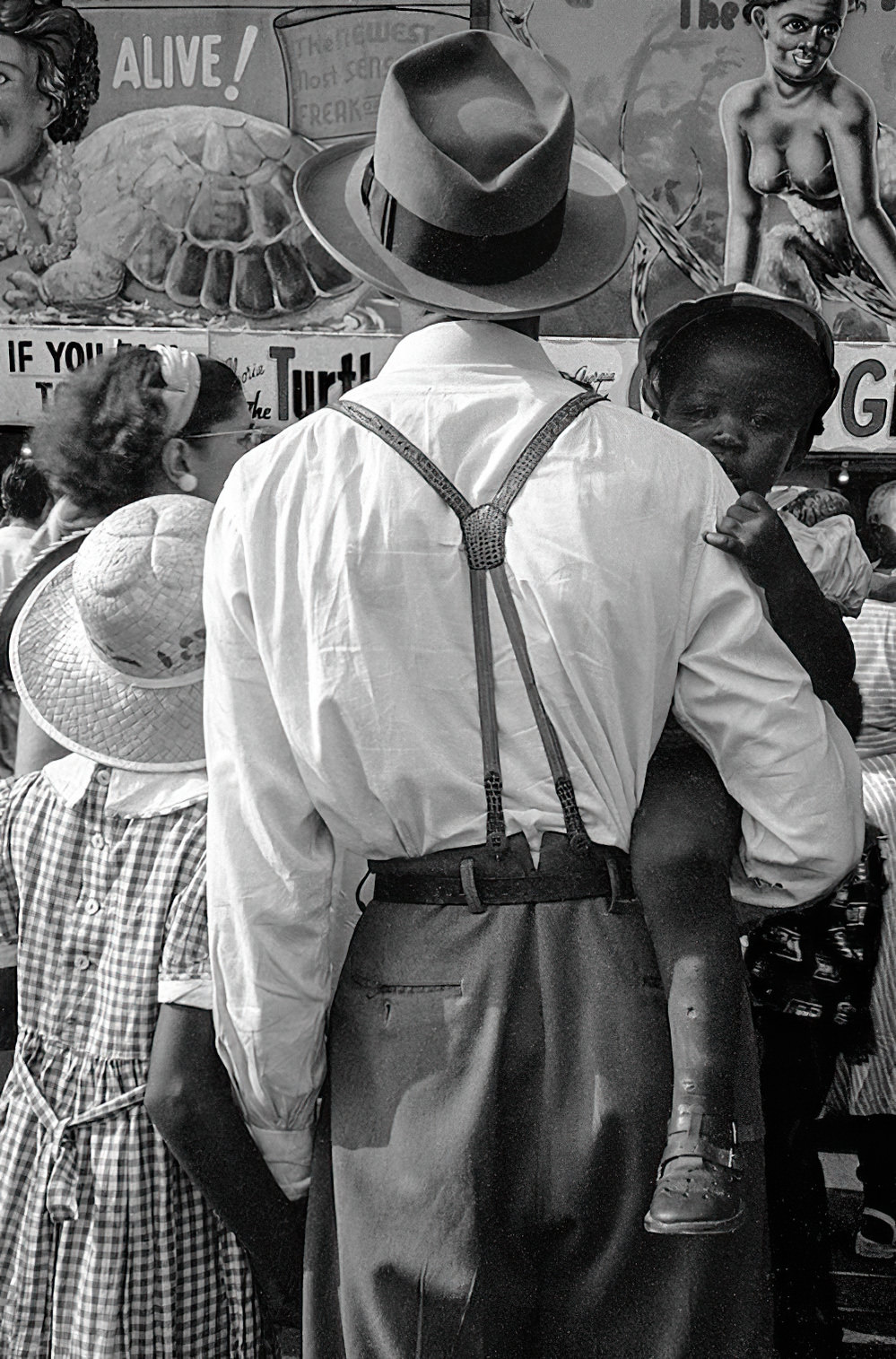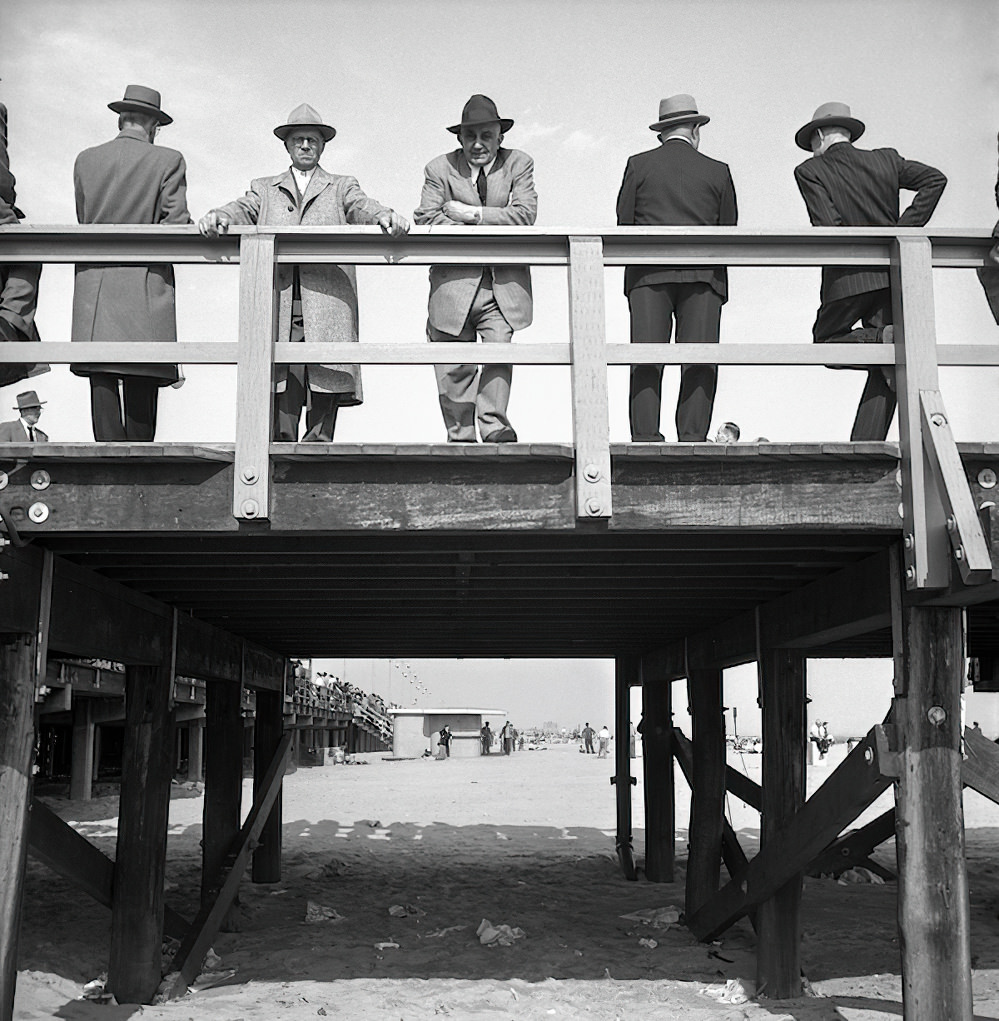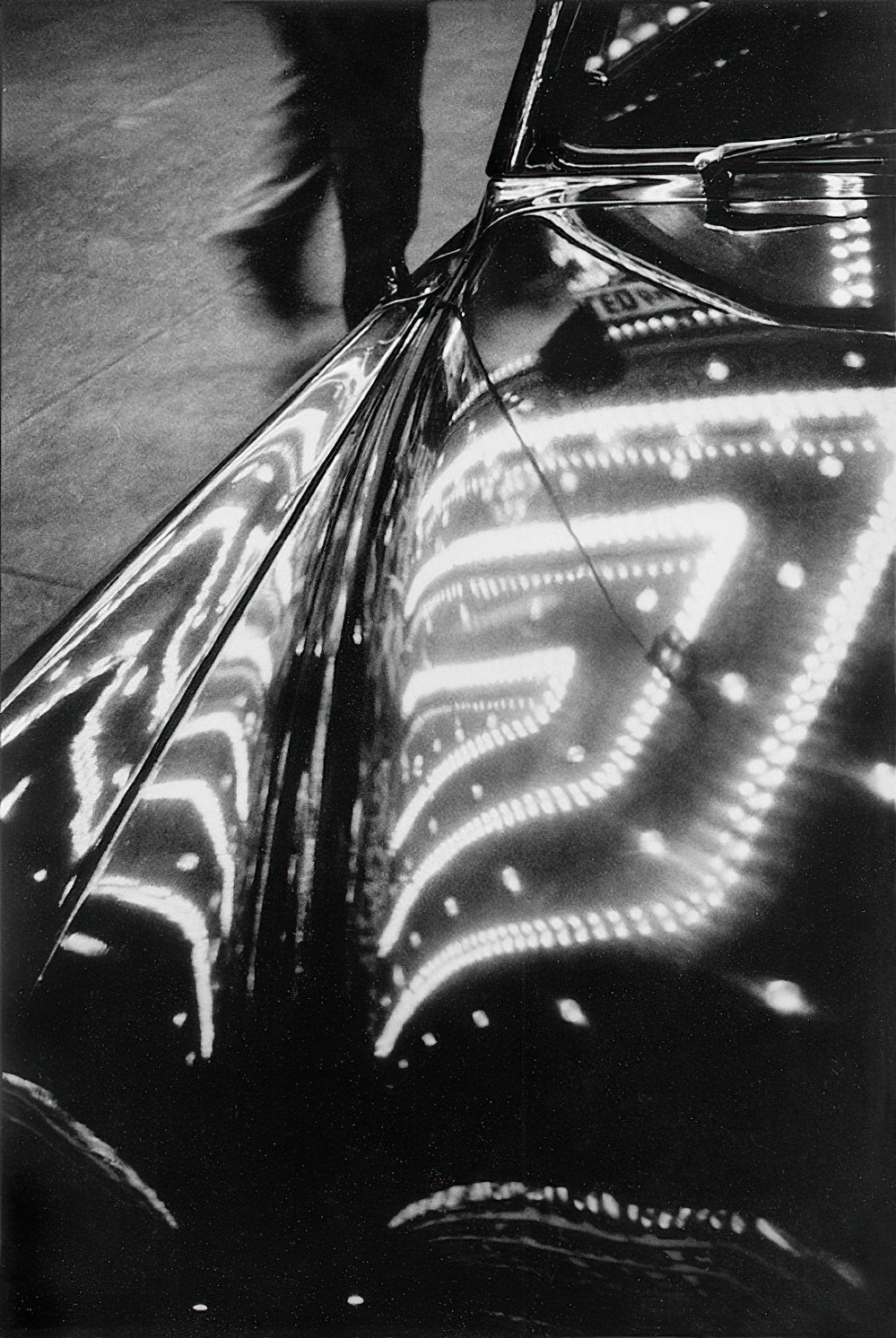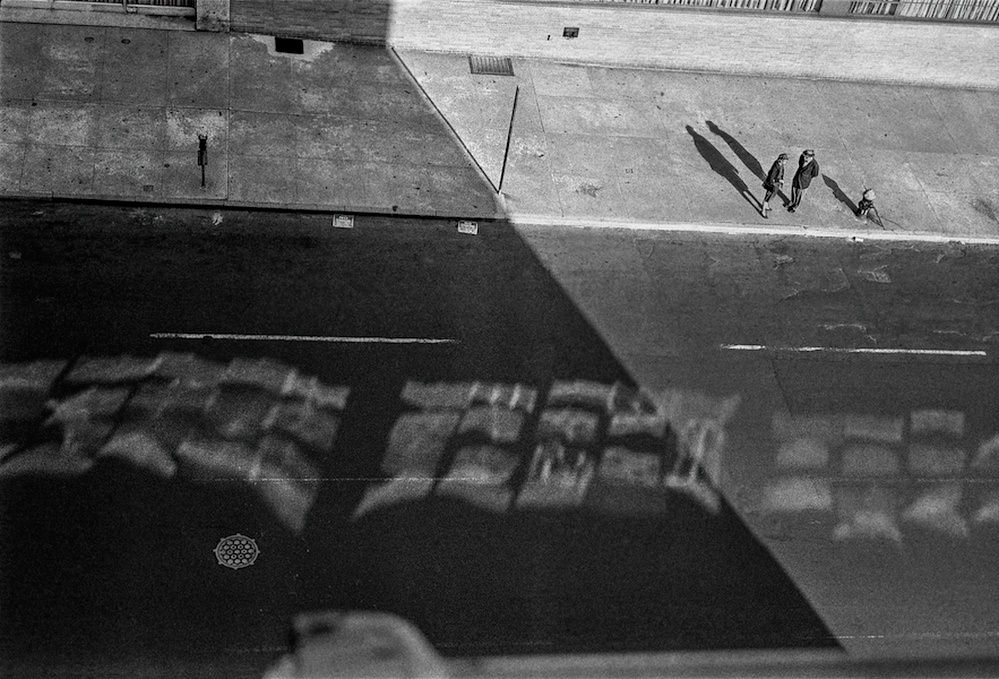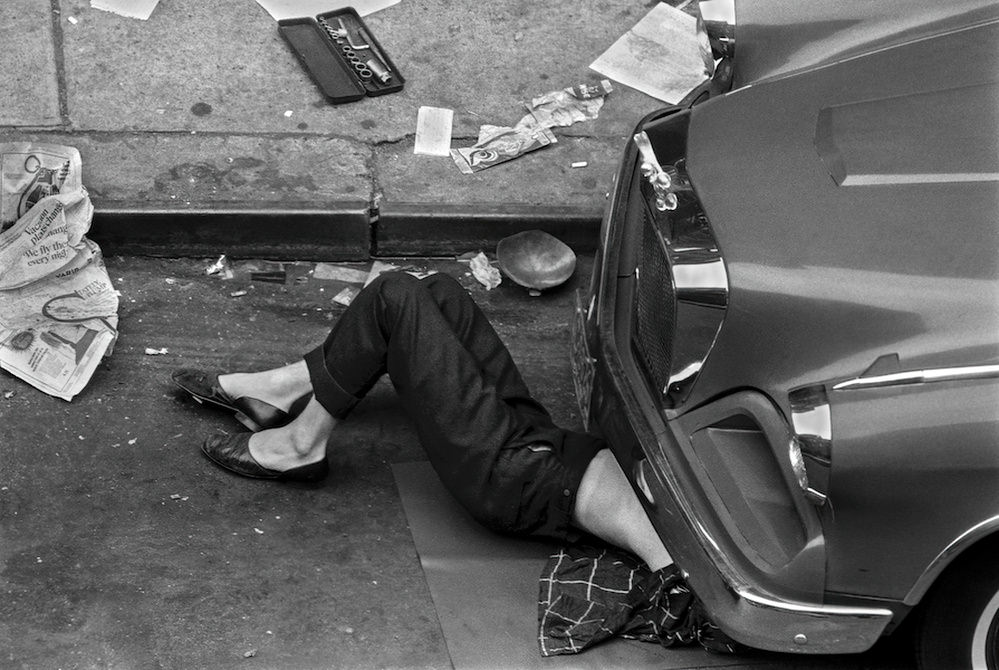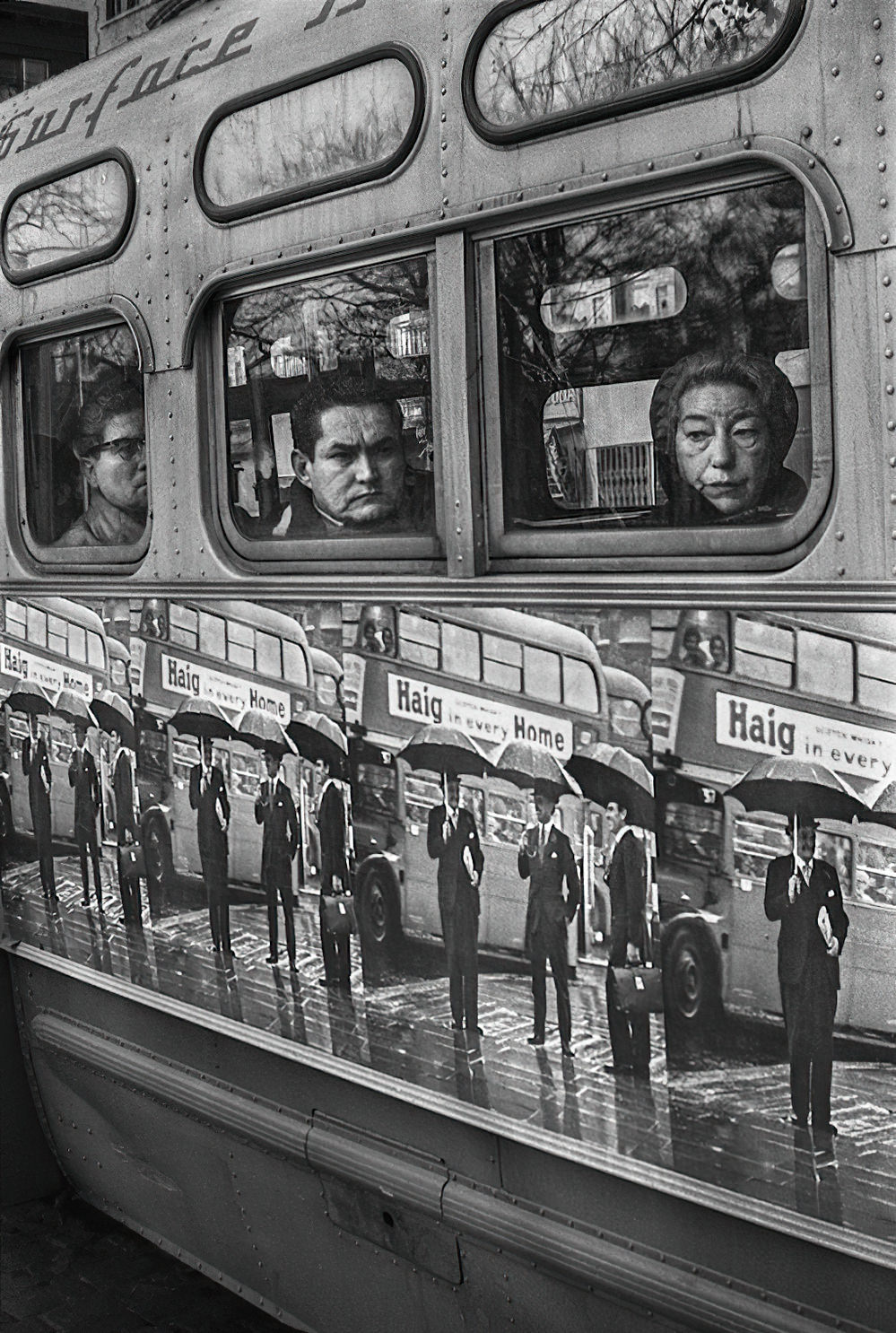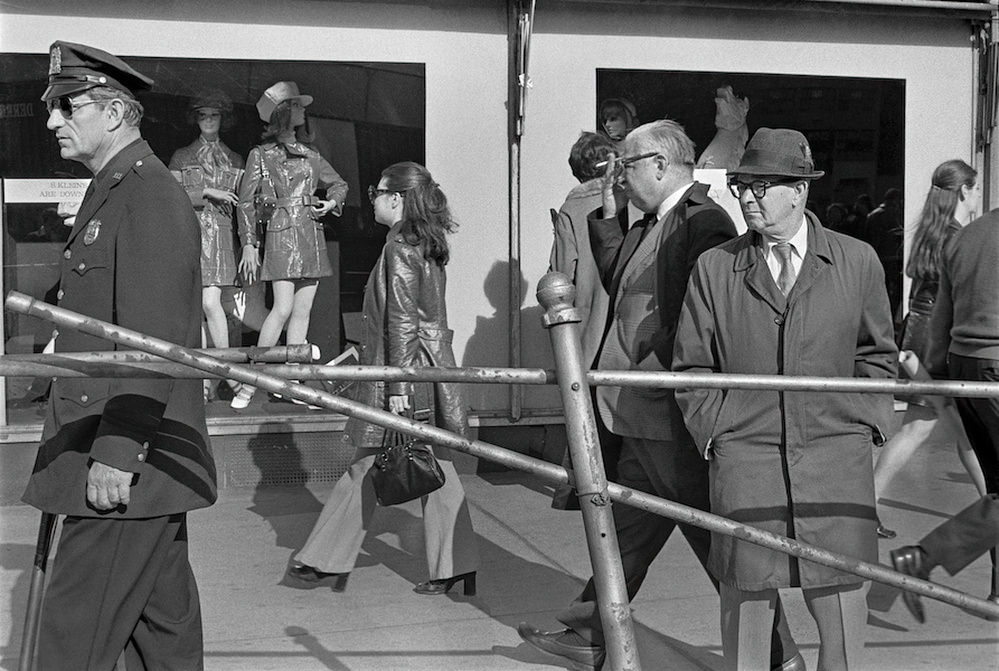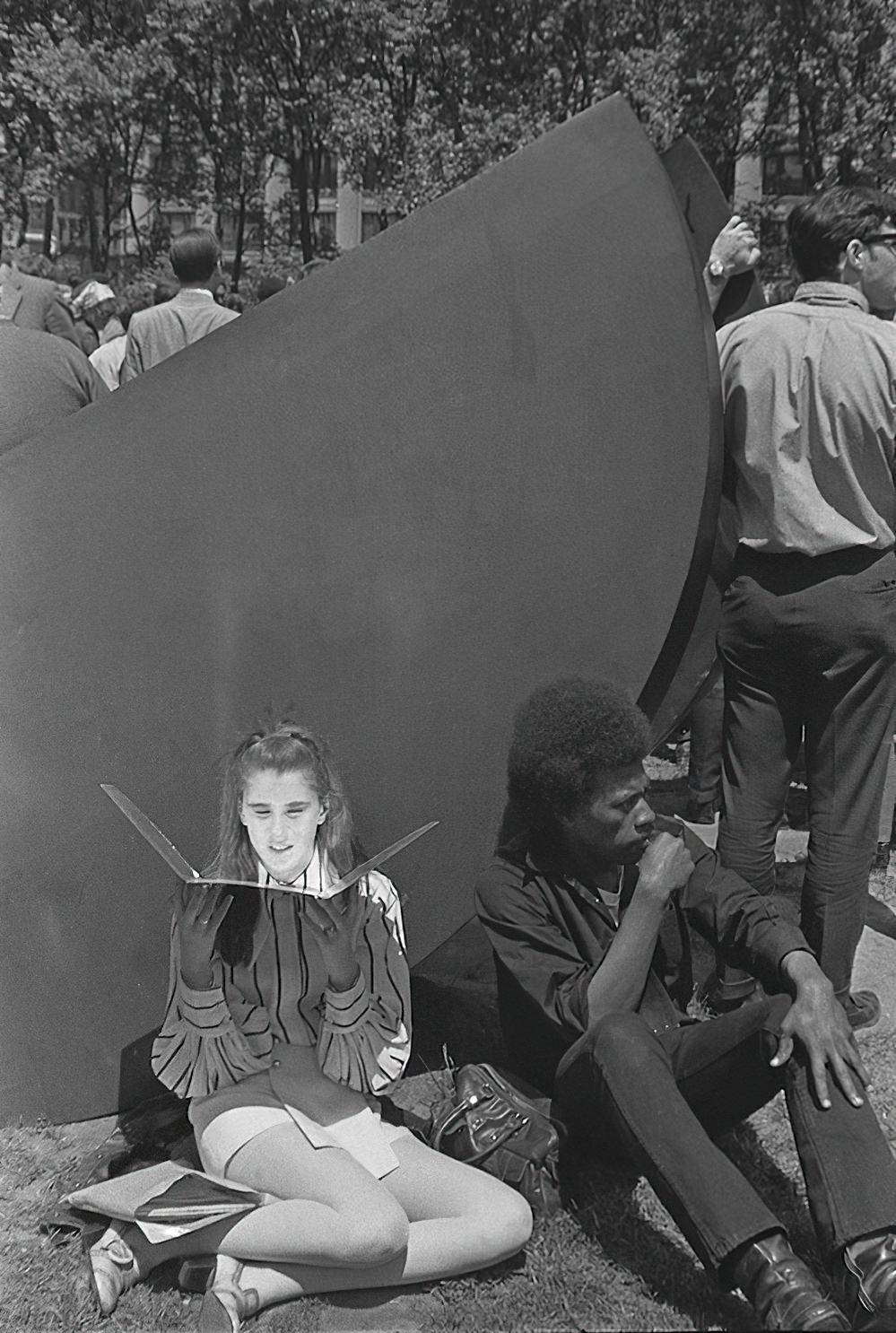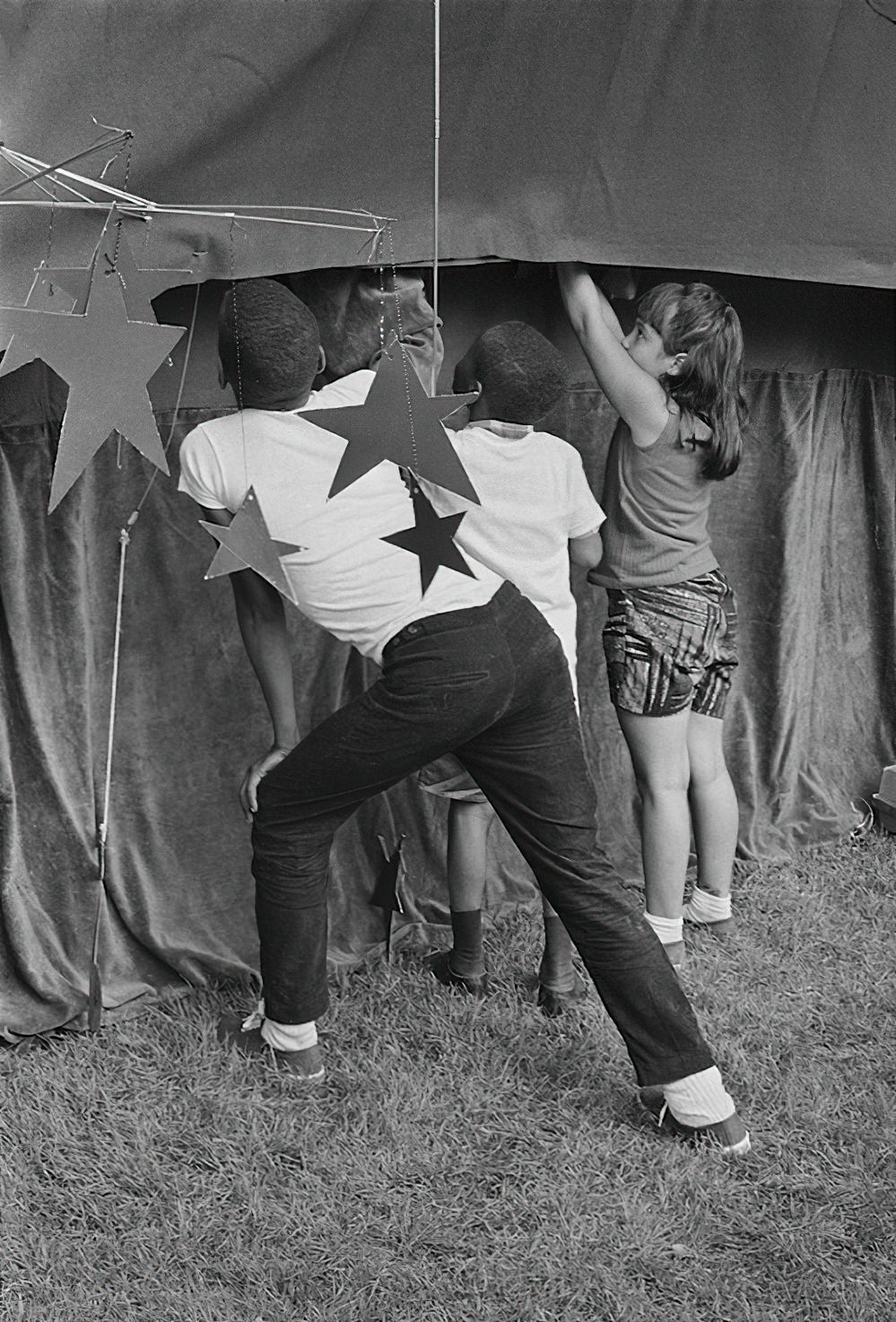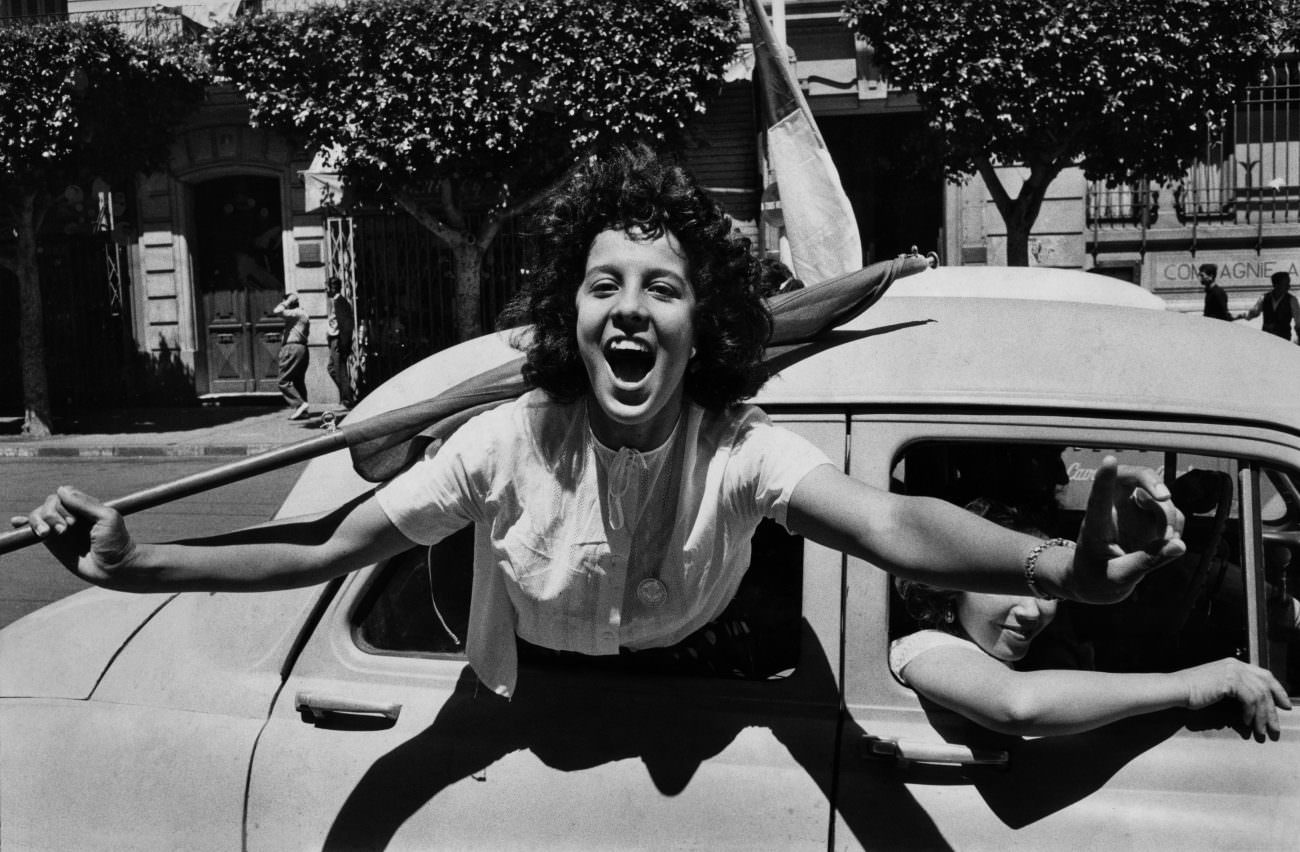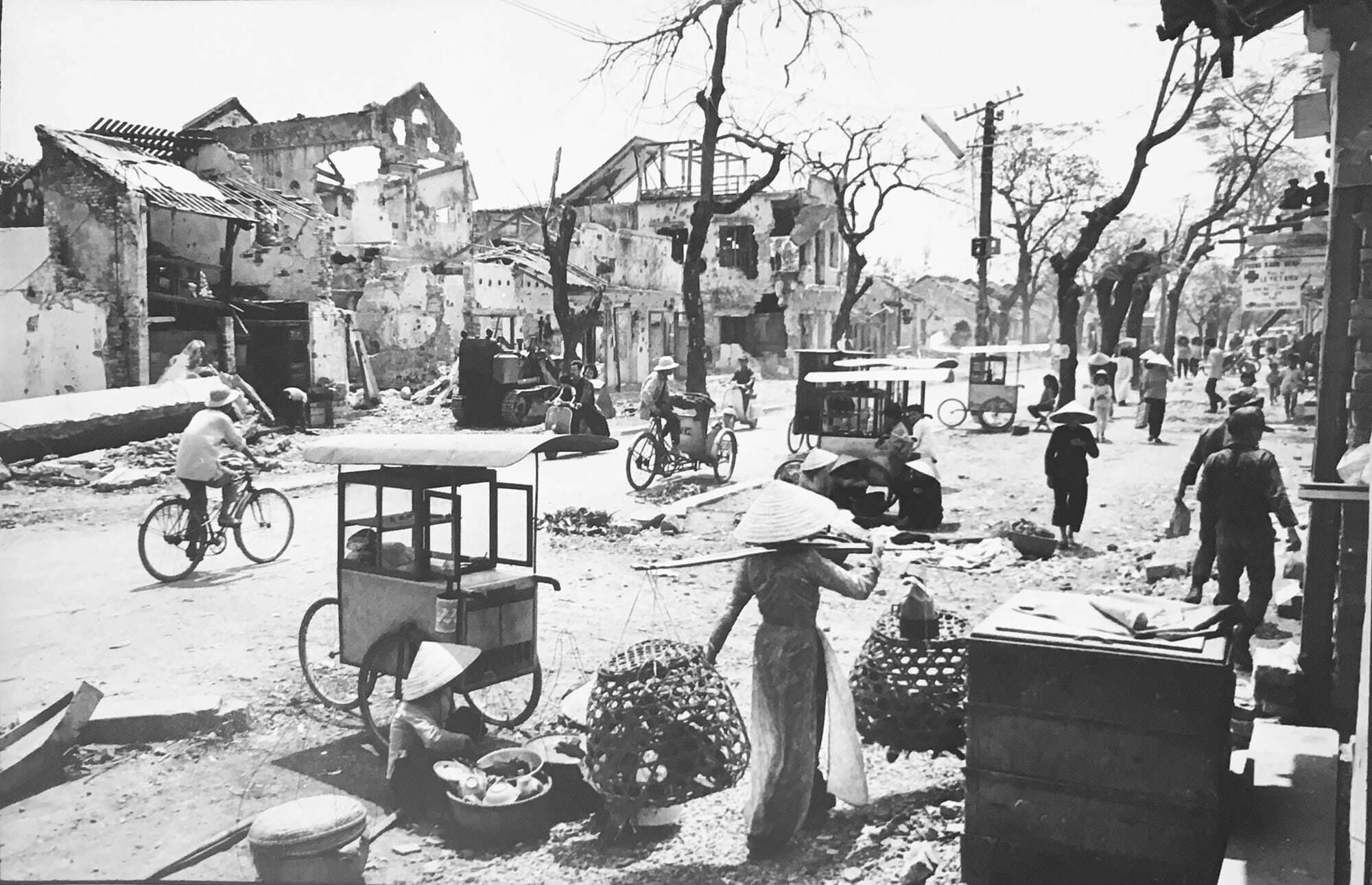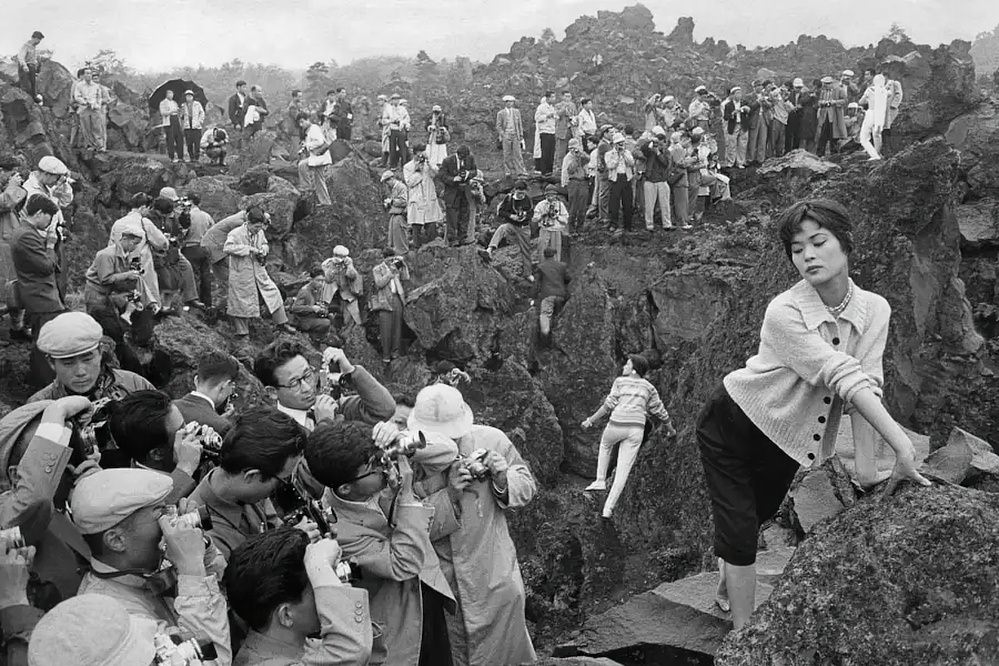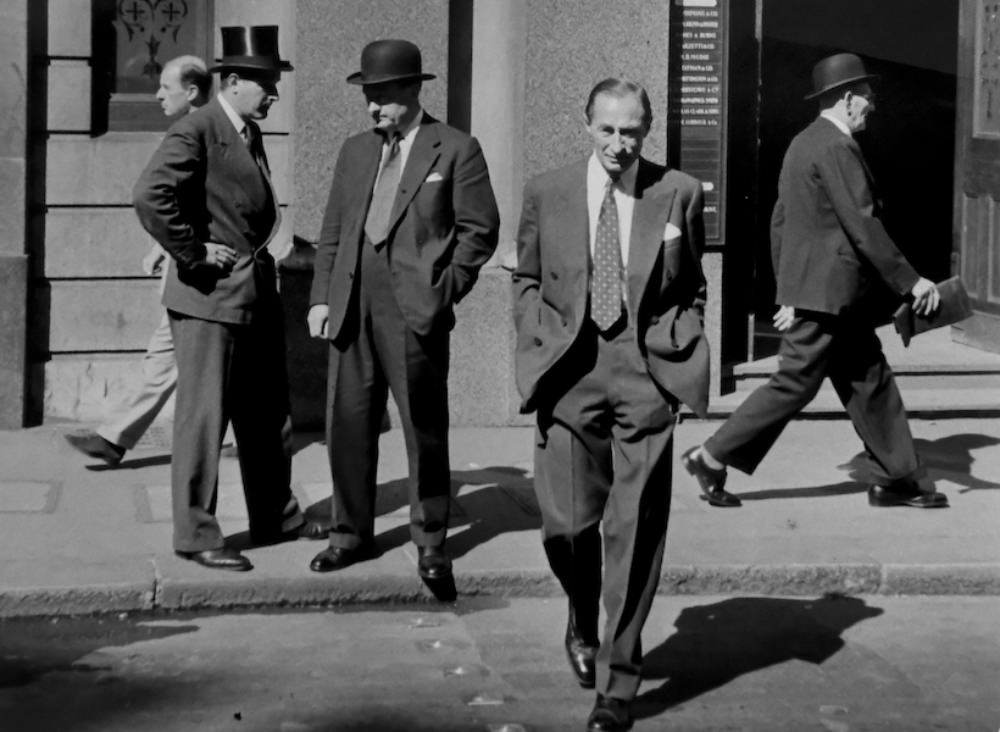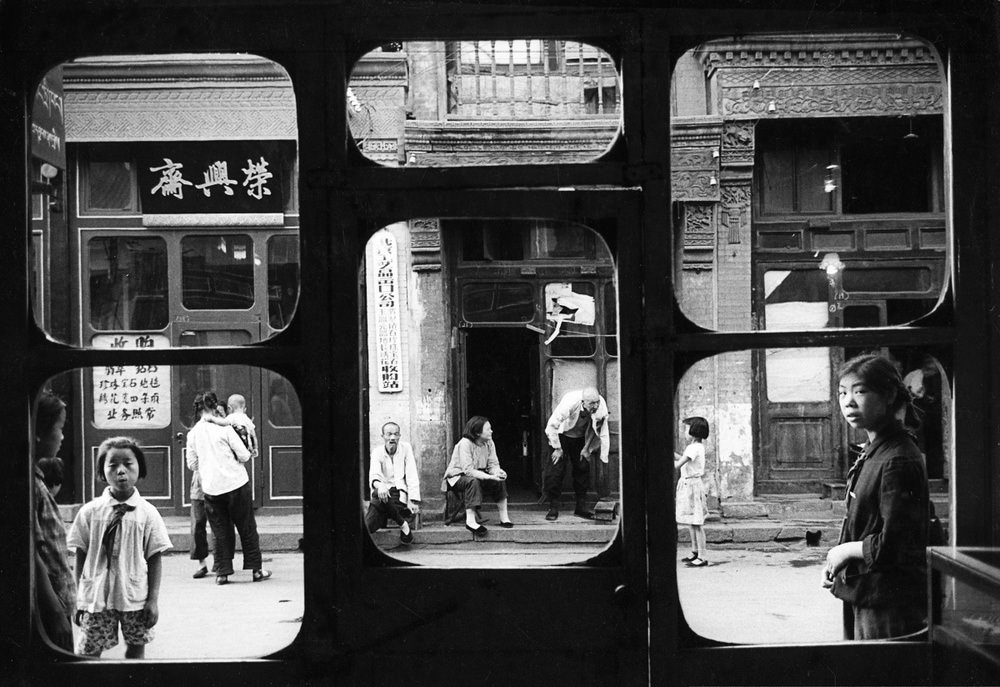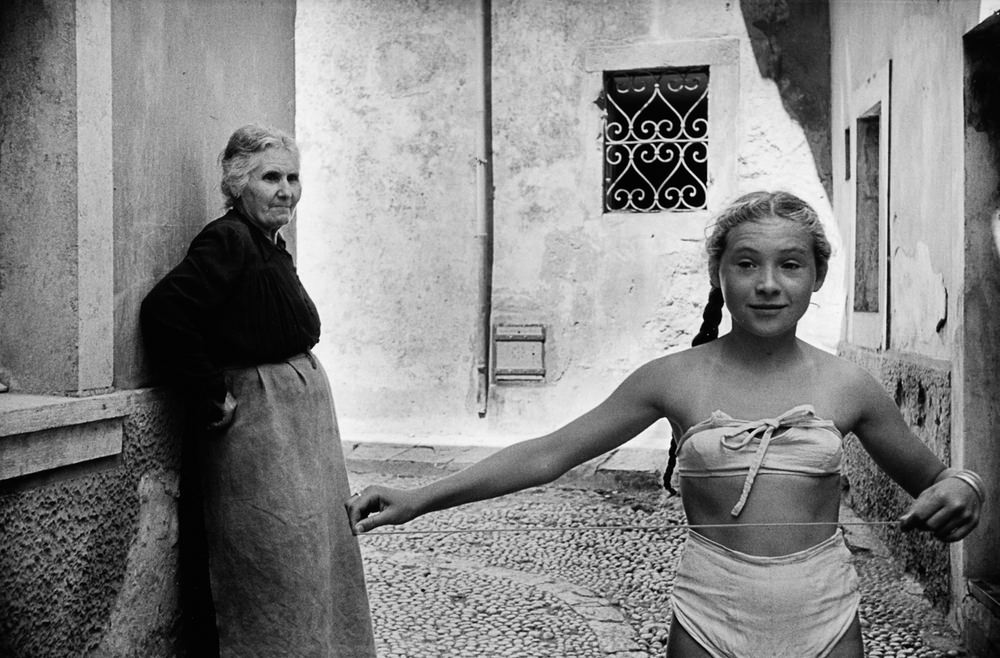Streets of New York: Werner Bischof, Mario Carnicelli, Harold Feinstein, Larry Fink, Marc Riboud
Streets of New York is an exhibition of Big Apple life, as captured by five masters of their craft. Featuring previously unseen images, the show includes work from the late 1940s through to the early 1970s, the period generally considered the golden age of street.
Streets of New York is an exhibition of Big Apple life, as captured by five masters of their craft. Curated by David Hill and Carrie Scott and featuring previously unseen images, the show includes work from the late 1940s through to the early 1970s, the period generally considered the golden age of street photography.
In alphabetical order, the five photographers in Streets of New York are Werner Bischof, one member of Magnum Photos; Mario Carnicelli, who this year received the inaugural Prix Viviane Esders in recognition of his career as a photographer; Harold Feinstein, described by the New York Times as one of the most accomplished recorders of the American experience; Larry Fink, hugely influential, with many exhibitions, photo books, and books on photographic theory to his name; Marc Riboud, Magnum Photos photographer, whose humanist eye recorded some of the most iconic images to be represented by the agency.
Bringing together the photographs of these artists in a single exhibition provides greater insight into their work, the era, and the importance of the genre.
Werner Bischof was born in Switzerland. He studied photography with Hans Finsler in his native Zurich at the School for Arts and Crafts, then opened a photography and advertising studio. In 1942, he became a freelancer for Du magazine, which published his first major photo essays in 1943. Bischof received international recognition after the publication of his 1945 reportage on the devastation caused by the Second World War.
In the years that followed, Bischof traveled in Italy and Greece for Swiss Relief, an organization dedicated to post-war reconstruction. In 1948, he photographed the Winter Olympics in St Moritz for UFE magazine. After trips to Eastern Europe, Finland, Sweden and Denmark, he worked for Picture Post, The Observer, Illustrated, and Epoca. He was the fa-st photographer to join Magnum Photos with the founding members in 1949.
Disliking the ‘superficiality and sensationalism’ of the magazine business, he devoted much of his working life to looking for order and tranquility in traditional culture, something that did not endear him to picture editors looking for hot topical material. Nonetheless, he found himself sent to report on the famine in India by Life magazine (I 95I), and he went on to work in Japan, Korea, Hong Kong and Indochina. The images from these reportages were used in major picture magazines throughout the world.
In the autumn of 1953, Bischof created a series of expansively composed colour photographs of the USA. The following year he traveled throughout Mexico and Panama, and then on to a remote part of Pem, where he was engaged in making a film. Tragically, Bischof died in a road accident in the Andes on 16 May 1954, only nine days before Magnum Photos founder Robert Capa lost his life in Indochina.
Mario Carnicelli
In 1966, Mario Carnicelli (born 1937), won first place in a national Italian photography competition, the prize was a scholarship to photograph America. Carnicelli approached the country as an outsider, and yet his perspective managed to capture the essence of the American experience. He was fascinated by the freedom offered by America, with its mix of cultures and traditions, its fashion and individuality, but at the same time, he was aware of pervading loneliness and rootlessness in people separated from family and clan.
With an eye informed by new Wave cinema, Carnicelli’s photographs are truly compelling, offering a view of the American dream that is both optimistic and contemplative. Unseen since the l 960s and only recently unearthed, Camicelli’s images were shown for the first time at David Hill Gallery in 2018.
In 2022, Mario Carnicelli was awarded the lifetime achievement award at the inaugural Prix Viviane Esders. Mario is currently working on a new monograph that will cover his 1964 series documenting the funeral of Togliatti, the three 1960s trips to the United States, and his South East Asian street photography.
‘With Mario Carnicelli, the word documentary takes on another dimension, as he engages in a true societal analysis, whether in black and white or in colour, in his native Italy or the United States. He seeks to reveal the essence of man rather than facts or gestures.’ Sophie Bernard.
Harold Feinstein
While influenced by the likes of W. Eugene Smith and Herui Cartier-Bresson, Feinstein was not a photographer who would stand back and observe unnoticed by his subjects. In fact, in nearly every image, Feinstein’s proximity to his subject is clear. It is this physical closeness, an extension of Feinstein’s profound connection to his subjects, that sets his work apart from other street photographers from the same period. Whether standing over a group of teenagers lying on a Coney Island beach, photographing a couple on the boulevard, or capturing the immutable gaze of a young child, intimacy and compassion sit at the core of each image.
Where his contemporaries – photographers like Diane Arbus, Walker Evans, and Garry Winogrand – documented the plight of the human condition without their subjects’ awareness, Feinstein celebrated humanity with his subjects. From the glittering lights of Times Square, to the streets of Harlem; from the smoke-filled coffee shops to subway cars; from city stoops to crowded beaches, Feinslein’s desire to connect with the world around him and share the experiences he saw is evident in every composition. A deep sense of empathetic humanity runs through these photographs. As Feinstein himself put it, ‘Everywhere people live out their own personal story, yet are tied together through the universal emotions of love, loss, curiosity, humour, and compassion… My street photography is a small sampling of my photographic journey bearing witness to the beauty and mystery of this human life.’
Born in Coney Island in 193 I, Feinstein left school to begin photographing at the age of I 5 and became one of the most prominent figures in the vanguard of the ew York City street photography scene, joining the famed Photo League when he was
17. At the age of 19, Feinstein’s work was acquired by Edward Steichen for the Museum of Modern Art (MoMA). He was included in shows at the Whitney Museum of American Art in 1954 and at the Musew11 of Modern Art in 1957. Feinstein also had a solo show at the legendary Helen Gee’s Limelight Gallery in 1957. Despite this early success, Feinstein ‘s extensive collection of classic street photography, nudes, portraits, and still life have seldom been exhibited. However, that is changing.
A renaissance of his remarkable work is currently underway as evidenced by the 2018 feature-length documentary Last Stop Coney Island: The Life and Photography of Harold Feinstein, which had its world premiere at DOC YC to a sold-out crowd. Thanks to the continued success of the film, the acclaimed monograph Harold Feinstein: A Retrospective ( Nazraeli Press, 2012), and a growing number of solo exhibitions worldwide, including 180 The Strand, London in 2019, and David Hill Gallery in 2020
Larry Fink
Working as a professional photographer for over fifty-five years, Larry Fink has had solo shows at New York’s Museum of Modern Art and the Whitney Museum of Modern Art, among many others. In Europe, be has had one-man shows at the Musee de l’Elysee in Lausanne, Switzerland, the Musee de la Photographie in Charleroi, Belgium, and in 2019 a retrospective at Fotografia Europea in Italy. He was awarded the Best of Show for an exhibition curated by Christian Caujolle at the Aries Festival of Photography in France. There have also been recent retrospective shows at the Museo de Arte Contemporaneo in Panama City, as well as six different museums in Spain.
In 2018, The Philadelphia Museum of Art exhibited Larry’s boxing photographs, and the deCordova Sculpture Park and Museum showed his deeply humanistic Primal Empathy series. Larry was the recipient of the Lucie Award for Documentary Photography in 2017, and in 2015, he received the International Center for Photography (ICP) Infinity Award for Lifetime Fine Art Photography. He has also been awarded two John Simon Guggenheim Fellowships and two National Endowment for the Arts, Individual Photography Fellowships. Larry has taught for over fifty-two years, with professorial positions held at Yale University, Cooper Union, and lastly at Bard College, where he is an honoured professor emeritus.
Larry’s first monograph, the seminal Social Graces (Aperture, 1984), left a lasting impression in the photographic community. There have been twelve other monographs with the subject matter crossing the class barrier in unexpected ways. Two of his recently published books were on several ‘Best Of’ lists for their years: TI1e Beats (Artiere /Powerhouse), and Larry Fink on Composition and Improvisation (Aperture). As an editorial photographer, The New Yorker and Vanity Fair have been among a long list of accounts. He has recently collaborated with fashion house Jil Sander, and in 2017, Larry’s work from The Beats and The Vanities was on display at Giorgio Armani’s Silos exhibition space in Milan, Italy. This exhibition was the first of its kind for the space. Additionally, the Newport Museum of Art in Rhode Island exhibited a picture from his monograph Somewhere There’s Music (Damiani). Fink On Warhol.- New York Photographs of 1he 1960s (Damiani), was published in 2017 and featured rare photographs of Andy Warhol and friends at the Factory, interspersed with street scenes and the political atmosphere of 1960s New York. The Polarities (L’Artiere) was published in the same year and chronicled his recent work, as was The Outpour (L’Artiere), which contained images taken at and around the Women’s March on Washington, D.C.
Larry Fink’s work is held in the permanent collections of numerous museums around the world.
Marc Riboud is born in 1923 in Saint-Genis-Laval near Lyon. In 1937 at the Exposition Universelle in Paris he takes his first photos using a small vest pocket Kodak given to him by his father for his 14th birthday. In 1944 he joins the resistance in the Vercors. From 1945 – 1948 he studies engineering at the Ecole Centrale in Lyon and starts to work. Three years after he decides to become a photographer.
In 1953 his photograph of a painter on the Eiffel Tower appears in Life Magazine. This is his first publication. Invited by Henri Cartier-Bresson and Robert Capa he joins Magnum Photos agency.
In 1955, he travels by road through the Middle East and Afghanistan to India and stays for one year. In 1957 he travels from Calcutta to China making the first of what will be many long stays. His road trip to the East ends in Japan where he finds the subject for what will become his first book, Women of Japan.
In 1960, after a three-month stay in the USSR, he covers the struggles for independence in Algeria and Sub-Saharan Africa. Between 1968 and 1969 he photographs in both South and North Vietnam, one of the rare photographers allowed entry.
In the 80s and 90s, he returns regularly in Orient and Far East, especially in Angkor and Huang Shan, but he also follows the rapid and considerable change of China, a country he has been looking at for thirty years.
In 2011 Marc Riboud makes a dation in payment of 192 original prints made between 1953 and 1977 to the National Museum of Modern Art (Centre Georges Pompidou), Paris. His work has been distinguished by prestigious awards and is exhibited in museums and galleries in Paris, New York, Shanghai, Tokyo, etc.
Marc Riboud passed away in Paris, at 93 years old, on August 30th, 2016. The core of his archives has been donated to the National Museum of Asian Arts – Guimet, Paris.
Streets of New York: Werner Bischof, Mario Carnicelli, Harold Feinstein, Larry Fink, Marc Riboud
Until 3 March 2023
David Hill Gallery – London
More info on:

